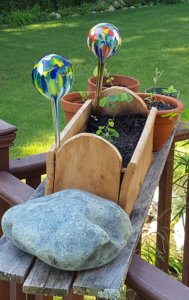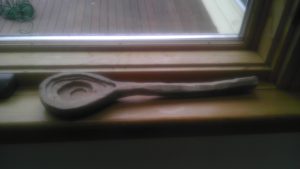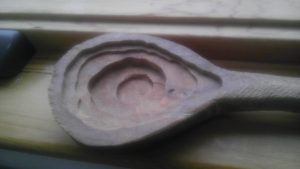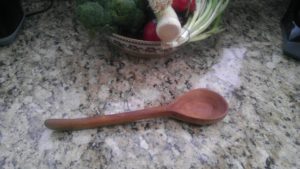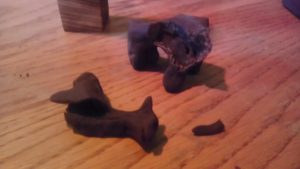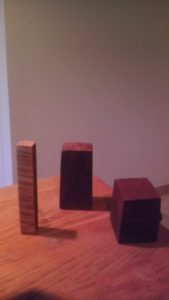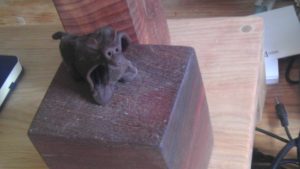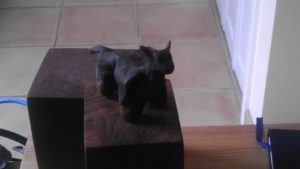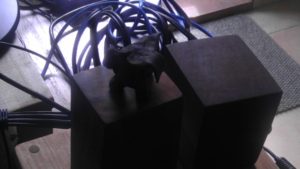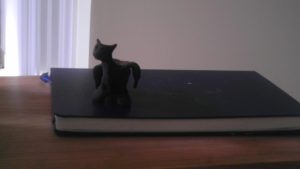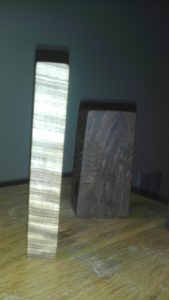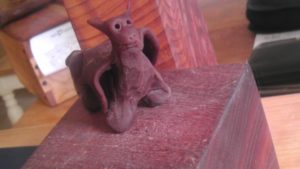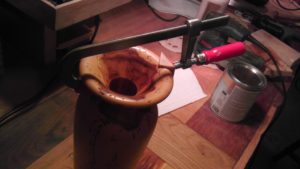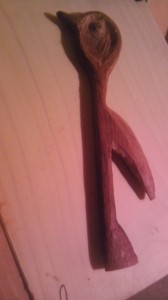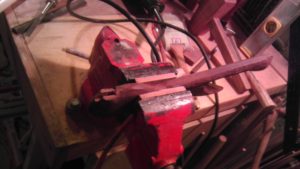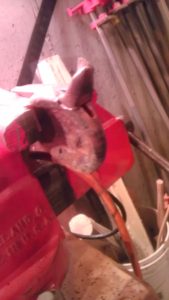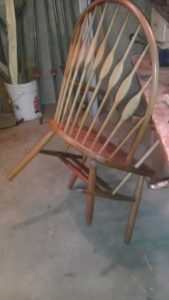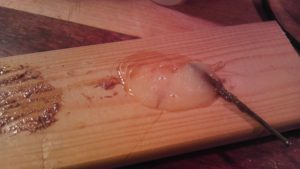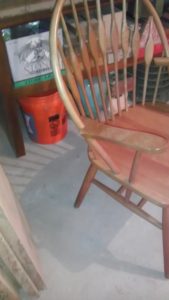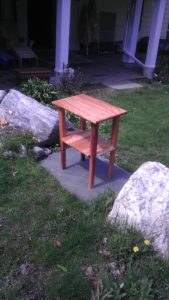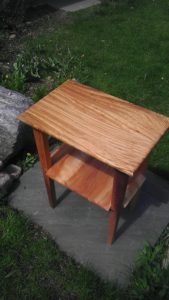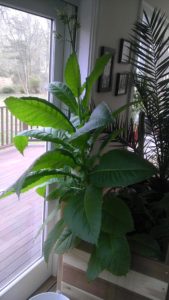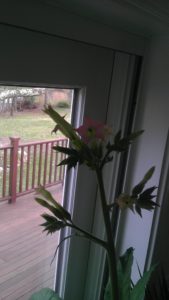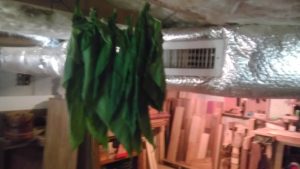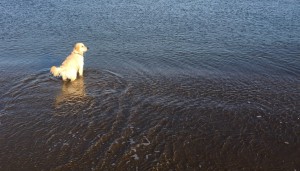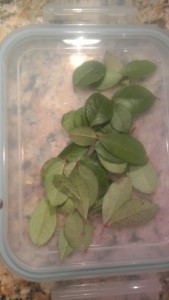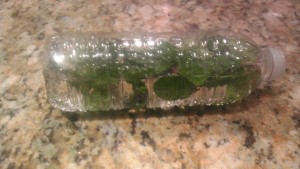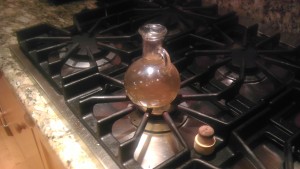Alright dear readers. I know how you’ve been fretting about the incompleteness of certain tasks – tasks begun in all great earnestness but seeming to fade without grandeur … into the woodwork!? Here we have a tale of such a task now nobly redeemed, having arrived at completion, freeing psychological energy and brightening attitudinal space. It’s a chair, basically, the first glimpse of which you got almost three years ago here.
It began with finding some wood at the dump, three six foot long one by eights. At the time I thought they were oak but in the intervening years I’ve learned a lot about wood and I know that they’re not oak, thought what they are I do not know. Hard though, almost a color like poplar, but surely harder, just not sure. Let me know if you have an intuition.
Also I had found at the dump an oaken (this was oak, not sure if red or brown, but not white) tall cabinet. I took the front off it. Some nice pieces there. Basically this chair is green, the way folks like to use the word in these days of sustainability, and up-cycled. Those adjectives certainly adhere – we’ll keep building on that.
The ideas then, not that I don’t reject Platonic idealism, but in this case the pattern holds more than not, of the chair came first and I sketched them out in wood.
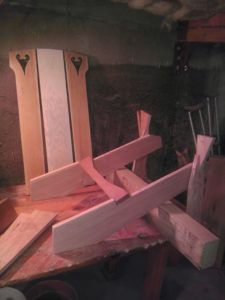
You can see a three piece back (the carve outs on the outside pieces were there in the oak cabinet but at the bottom, so here they are inverted). That piece in the center is a piece of hickory, the only not up-cycled piece in the assemblage. It was selected for the grain. We’ll come back to that. An Adirondack chair it was to be and I made some legs that I thought nicely addressed the need to be flush to the long leg base but perpendicular to the arm. No nails or screws in this baby. Is there a word for that?
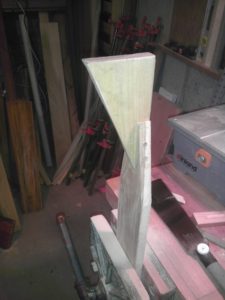
Anyway, I selected, cut out, and planed the five seat slats. Two of that cabinet oak, three random, of which one was perhaps butternut and the other two I have no idea. Suddenly though, about August 2013 the project goes fallow. I had so many irons in the fire, gourd banjos, gourd mbiras, oaken pliers, making the shop more capable, also I had a regular and sometimes intense work life too, and also I was intimidated by the joint I had selected for where the arms meet surrounding the back – I’d decided that none of the commonly used props and supports were really needed, that it would be sleeker and cooler and better – but I was not sure, so I paused.
Fast forward two years. The thing sat in the shop taunting me. My nephew was going to be around for a few weeks and he’s a useful one. He helped affix the slats (and adjust them as needed), work out some of the geometry in the arm joint plan, and get the back attached. At the end of his contribution all that was really left was the attachment of the arms.
Fast forward eight months. I have no idea how inertia is overcome, why things not in motion get into motion and things in motion cease to be in motion. Is there a scientific word for this opposite of inertia? It was right after the completion of the table, which came out nicely and filled me with confidence, that I put it up next.
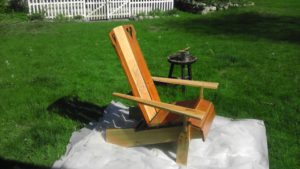

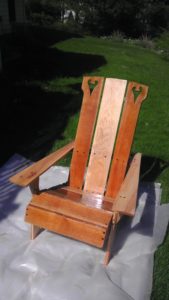
I used a marine spar varnish, which seemed the right thing if this is to live outside. It came out strong. I used epoxy-resin on the joints where the arms join to the back piece and where the arms join to the legs. These struck me as the joints subject to the most stress and having the least mechanical advantage.
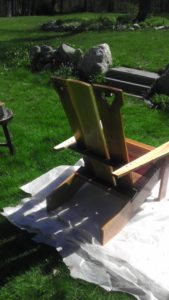
I had mentioned the grain of the hickory. Click on it to expand.
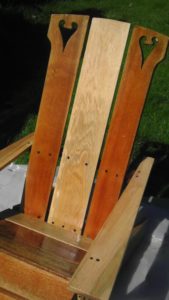
to me it certainly looked like a fire with smoke. Euphemistically kundalini perhaps. Made me think of a next chair where the stone capture technique from the jade box could surround one appropriate stone slice for each chakra. <Sigh>. More ideas than time, certainly, but I’d love to get to that one and you heard it here first.
I must also thank my Mother, for whom this was to be a birthday present back in 2013. She has been patient and kind in waiting. May she have many years of comfort (if, of course, it is comfortable – I sure hope so – there are so many things one does not know when one builds a first thing in a genre). I test sat in it. It was not flimsy. I felt as if I were at Campobello (translate as “some legendary place where folks who really matter contemplate the destiny of the world in the relaxed comfort of their private estates). I mean, isn’t that the feeling that a proper Adirondack chair is supposed to generate? Maybe also I felt this exaltation because of the kundalini channeling somehow made manifest in the chair – we’ll have to test it out on various subjects.
It was a fun project and I’m so glad to complete it.

